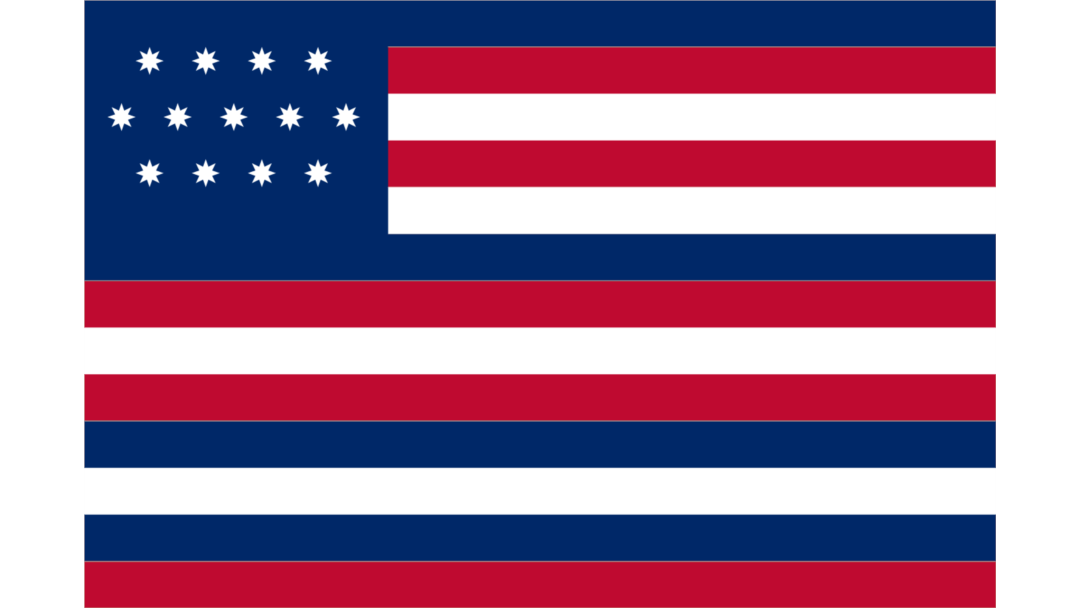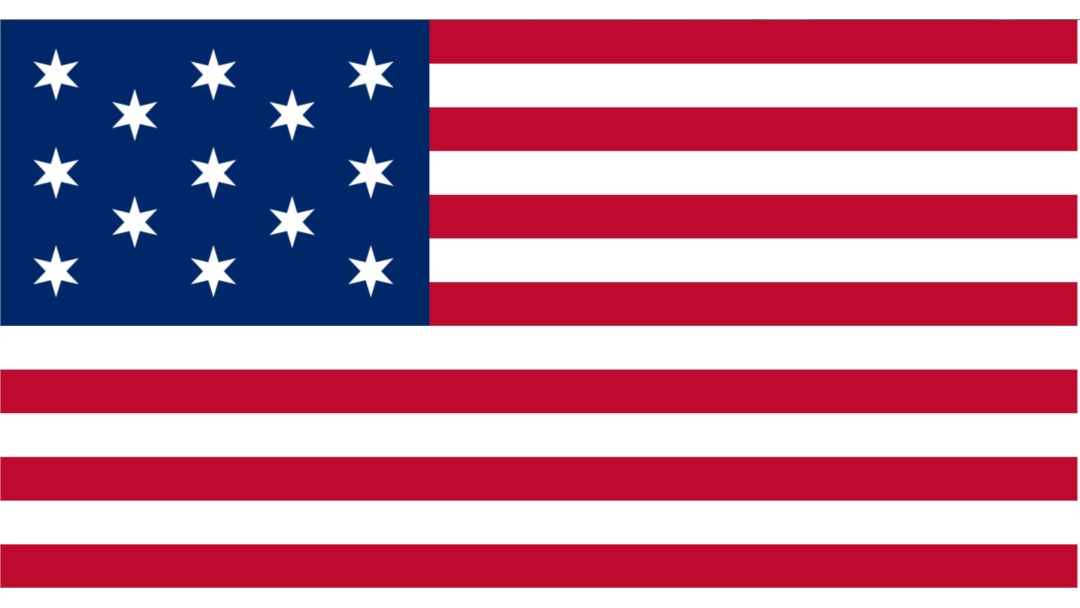For many Americans, June 14 comes and goes without them realizing that it is Flag Day, which commemorates the official adoption, on June 14, 1777, of the U.S. flag by the Second Continental Congress.
The Second Continental Congress governed the American colonies from 1775 to 1781.
The American flag has had many iterations, evolving from an unofficial banner into a government-sanctioned version in 1777.

John Paul Jones flew this flag to avoid piracy charges after capturing a British ship.
Earl P. Williams, author of “What You Should Know About the American Flag,” says it is not known who created the first unofficial flag, but a famous naval commander in the American Revolutionary War was among the first to fly it.
“The first person to use it was John Paul Jones who was a lieutenant in the Continental Navy,” Williams says, “and he claimed that, in December of 1775, he raised on his ship a flag with 13 stripes. There were seven red stripes and six white stripes. Those 13 stripes represent the solidarity of the 13 states and their opposition to British rule.”
No one knows who designed the first “official” American flag. Some historians believe it was New Jersey Congressman Francis Hopkinson.

Francis Hopkinson's flag featuring 13 six-pointed stars arranged in rows.
“Hopkinson was an artist and graphic designer,” Williams says. “His flag was initially meant for the U.S. Navy. Evidence shows that he designed two flags and possibly three. One for America, one for the Navy, and possibly one for the Army or Army artillery.”
American lore suggests that Philadelphia seamstress Betsy Ross sewed the first official banner.
Ross was a widow whose husband, a member of the local militia, was killed in a gunpowder explosion. She often mended the clothes of the rebels’ leader and future U.S. president, George Washington.
Betsy Ross may have created the U.S. flag in the upstairs rooms she rented in this Philadelphia house.
According to legend, Washington asked Ross to design and sew the new nation’s flag. Whether or not that’s what really happened remains the subject of debate. But Ross’s grandson was among those who promoted the story that his grandmother made the nation’s first flag.
Up until 1960, Congress continuously ordered changes in the design of the flag. Stars and stripes were added whenever a new state joined the union.
Today’s flag still has 13 horizontal stripes, seven red and six white. The stripes represent the original 13 colonies and the stars represent the 50 U.S. states.
The colors of the flag have meaning as well. The red is meant to symbolize hardiness and valor, the white purity and innocence, and the blue represents vigilance, perseverance and justice.
President Woodrow Wilson officially established June 14 as Flag Day in 1916. The day passes without many Americans noticing, possibly because Flag Day is not an official holiday, which means Americans don’t have the day off from work.
The "Betsy Ross" design of the first U.S. flag with 13 stars in a circle.
Today, there are a few places where the U.S. flag is required to be flown 24 hours a day. These locations include Fort McHenry in Baltimore, Maryland; the U.S. Marine Corps Memorial Iwo Jima in Arlington, Virginia; on the Green in Lexington, Massachusetts; all U.S. Customs ports of entry, and the White House in Washington.


